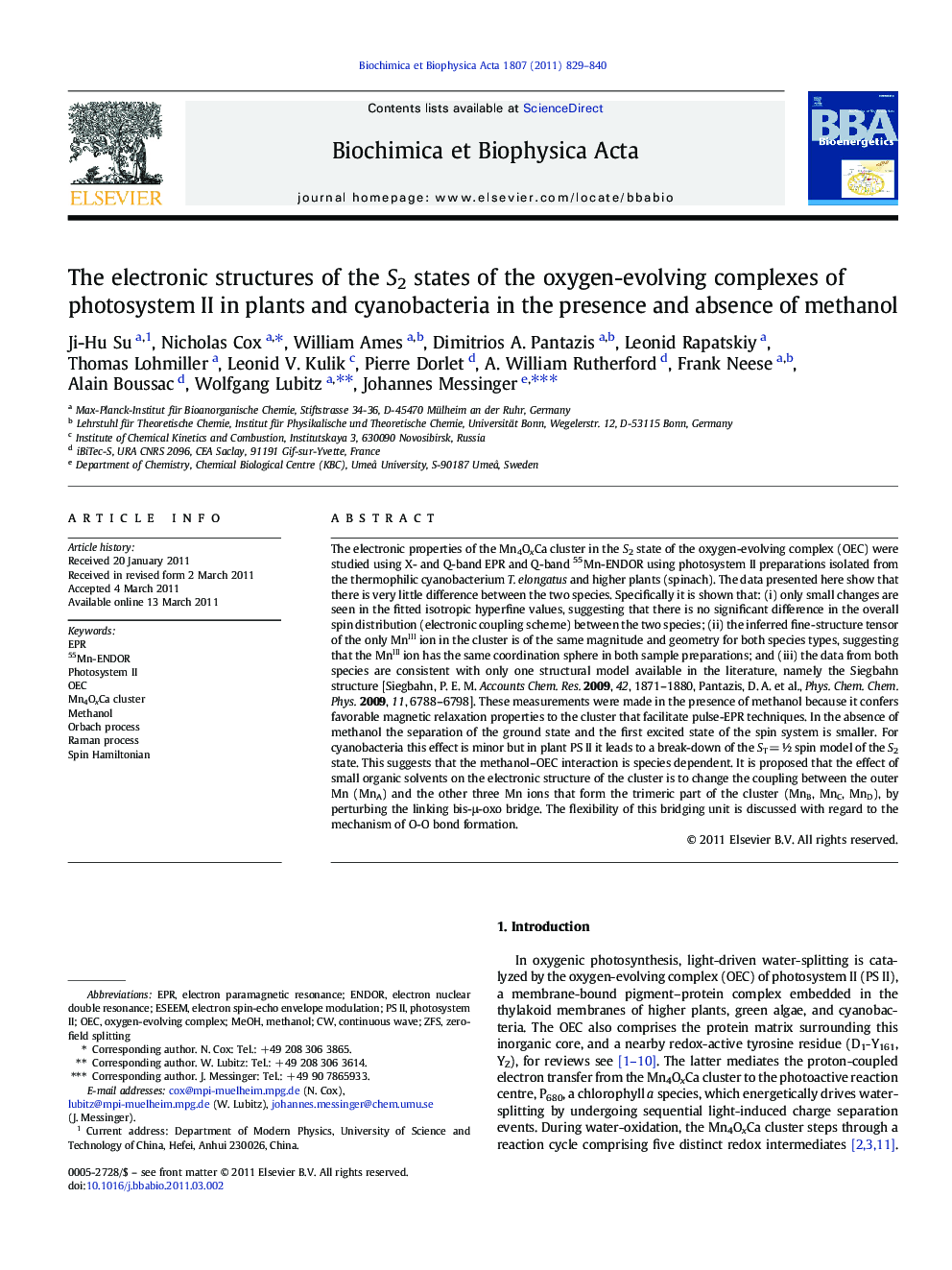| Article ID | Journal | Published Year | Pages | File Type |
|---|---|---|---|---|
| 1942727 | Biochimica et Biophysica Acta (BBA) - Bioenergetics | 2011 | 12 Pages |
The electronic properties of the Mn4OxCa cluster in the S2 state of the oxygen-evolving complex (OEC) were studied using X- and Q-band EPR and Q-band 55Mn-ENDOR using photosystem II preparations isolated from the thermophilic cyanobacterium T. elongatus and higher plants (spinach). The data presented here show that there is very little difference between the two species. Specifically it is shown that: (i) only small changes are seen in the fitted isotropic hyperfine values, suggesting that there is no significant difference in the overall spin distribution (electronic coupling scheme) between the two species; (ii) the inferred fine-structure tensor of the only MnIII ion in the cluster is of the same magnitude and geometry for both species types, suggesting that the MnIII ion has the same coordination sphere in both sample preparations; and (iii) the data from both species are consistent with only one structural model available in the literature, namely the Siegbahn structure [Siegbahn, P. E. M. Accounts Chem. Res.2009, 42, 1871–1880, Pantazis, D. A. et al., Phys. Chem. Chem. Phys.2009, 11, 6788–6798]. These measurements were made in the presence of methanol because it confers favorable magnetic relaxation properties to the cluster that facilitate pulse-EPR techniques. In the absence of methanol the separation of the ground state and the first excited state of the spin system is smaller. For cyanobacteria this effect is minor but in plant PS II it leads to a break-down of the ST = ½ spin model of the S2 state. This suggests that the methanol–OEC interaction is species dependent. It is proposed that the effect of small organic solvents on the electronic structure of the cluster is to change the coupling between the outer Mn (MnA) and the other three Mn ions that form the trimeric part of the cluster (MnB, MnC, MnD), by perturbing the linking bis-μ-oxo bridge. The flexibility of this bridging unit is discussed with regard to the mechanism of O-O bond formation.
► The S2 electronic structures of the OECs of T. elongatus and plant PS II are similar. ► Both can be explained using the same coupling scheme. ► The inferred on-site ZFS of the MnIII changes for the two OECs. ► Methanol changes the electronic coupling scheme.
